A classroom is a place where little kids spend a lot of time learning all the basics, acquiring new skills and socializing with their peers. In fact, the classroom itself has a big effect on kids and their ability to learn. Now, in order for it to be a place that children find inviting and comfortable to stay in, it needs to be designed well.
Contents
Wiggly Cushions for Sitting
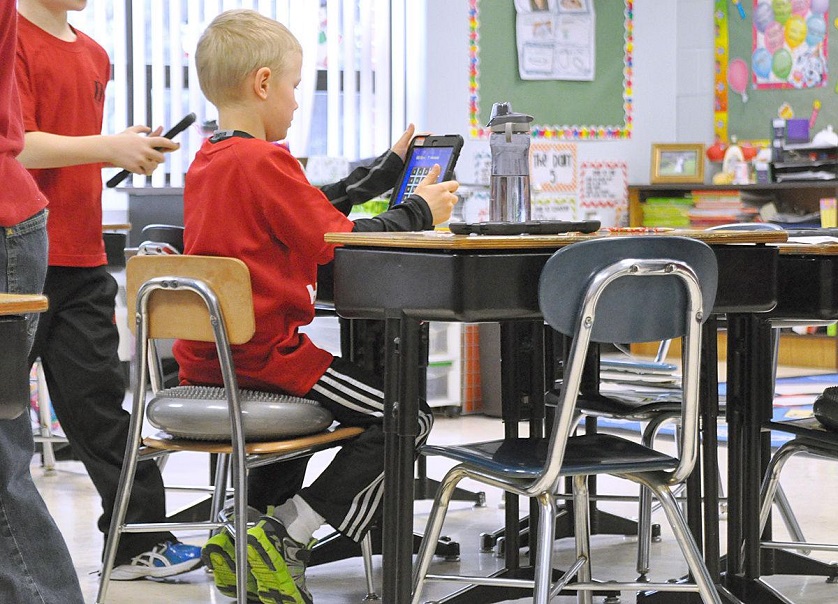
Wiggly cushions are considered to be alternative sitting furniture that’s both sleek and space-saving. All you need to do is fill the cushion with air, place it on the ground and you have a surface on which kids adore to sit. But, there’s more to them than just that. Wiggly cushions actually have a therapeutic effect on little kids. They wiggle the whole time (hence the name) and help kids be more alert, attentive and focused. They’re highly recommended for kids who lack focus.
The wriggle cushion is also called a sensory cushion because it affects the sensory system of children. They’re great for kids who constantly move or rock their chairs trying to stay alert and mentally present. On another hand, wiggle cushions help kids sit in a proper position and maintain good posture. That also affects their level of alertness. And in the long term, kids using wiggly cushions end up having better posture, stronger muscles and overall reduced strain of the joints and ligaments.
Besides being placed on the ground, the wobble cushion for children can also be placed on top of a chair or a bench. However, this needs to be a firm surface because the effects will be significantly reduced (maybe even non-existent) if the cushion is being placed on top of another soft and wiggly surface.
Usually, wobble cushions are textured. They have spikes and bumps that affect the tactile system and help kids with alertness. Thanks to the wobble cushion for children little ones can enjoy active sitting as well as balance training. In fact, the big cushions are considered to be similar to the balance ball and can fit two kids at a time. They can even stand or lay on top of the cushion. So, the cushion is both fun and helpful.
Classroom Chairs That Offer Support
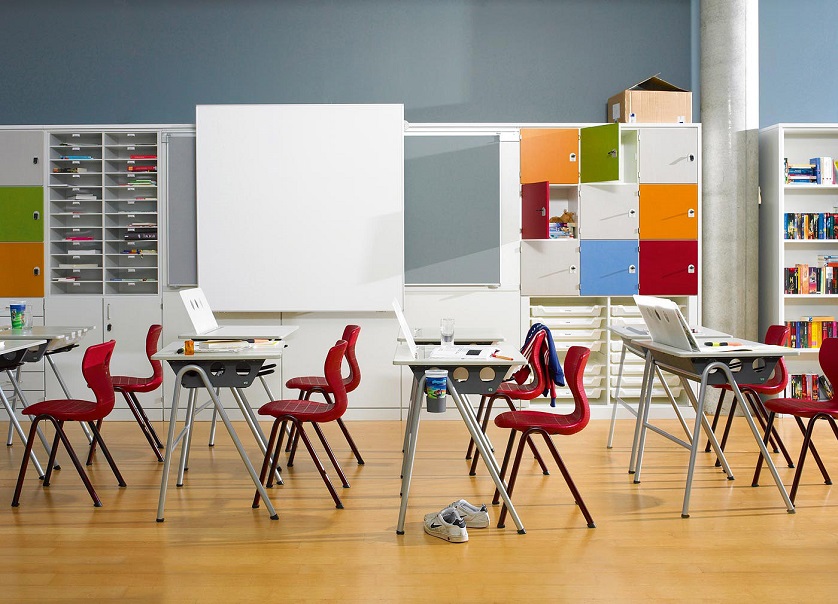
Besides the fun wiggly cushions, a classroom needs to have classic chairs too. Classic with a twist, to be precise. Chairs that are most commonly used in classrooms nowadays differ a lot from the basic four-legged chairs from the past. There have been many upgrades to the classroom chair and now it has an ergonomic design, allows movement and mobility, supports proper posture and makes sitting a pleasure overall.
So, when in doubt, always go for the ergonomic chairs that aid the physical health of children and scream comfort. The level of comfort a chair provides is directly correlated with how happy, focused and eager to study and learn a child will be. The more relaxing the environment the better the end results of students.
Ergonomic Classroom Tables
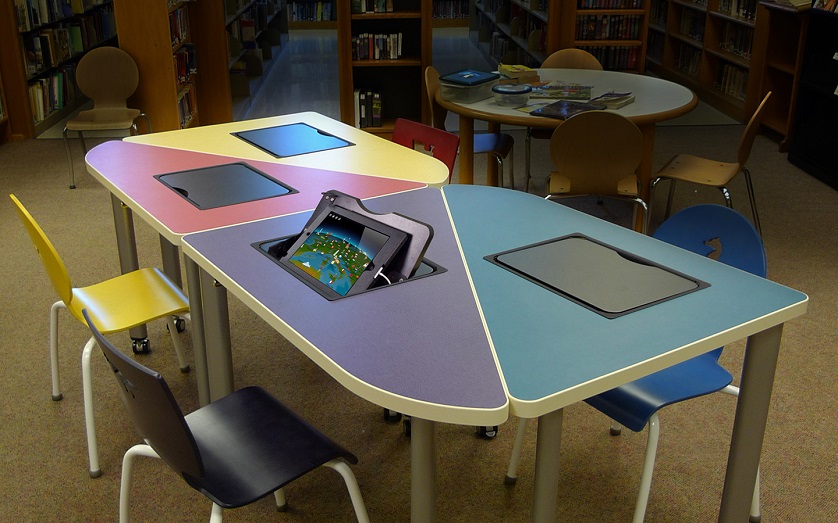
Same as the chairs, classroom tables need to be ergonomic and comfortable too. What does that mean? Classroom tables need to have dimensions that correspond to the age of the students in question. They need to be firm and steady but at the same time allow kids to freely move their legs, get up and sit down.
To save space and encourage socialization a lot of teachers go for the collaborative tables. They are designed to fit a group of 4-6 students at a time and allow them to work together on group projects and communicate during the process. Collaborative tables can even be merged to put together a larger group or taken apart again. Studies have shown that teamwork is essential for little kids to start communicating better, improve their social skills and become team players.
On another hand, you can avoid the plain crowded look that classrooms with traditional furniture have. Collaborative tables make for a classroom that looks spacious, well thought out and inviting.
A Classic Whiteboard
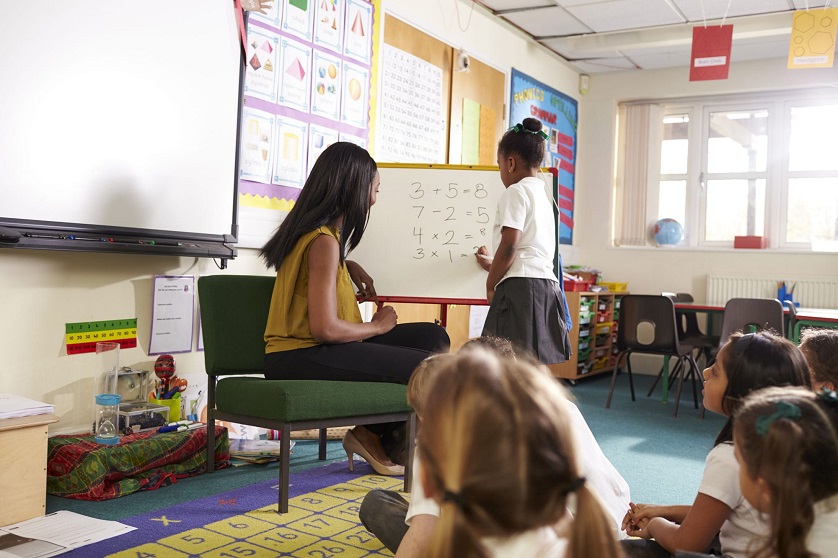
The whiteboard is maybe the first thing that pops into everybody’s mind when the classroom is being mentioned. It’s sort of like a synonym for a classroom. And for a reason. In a way, the whiteboard is the centrepiece of the classroom and the centre of attention for the students. When you think about it, it’s quite practical. It allows for the teacher to explain important things and write down the essentials by making them visible to the whole class.
The whiteboard significantly aids teaching and at the same time can be a way for kids to be included in the teaching process. Although with time the whiteboard has been upgraded too, and now there are interactive whiteboards with far more options and possibilities, it still is the ultimate furniture piece that increases the engagement between the teacher and the students among other things.
Teacher’s Desk
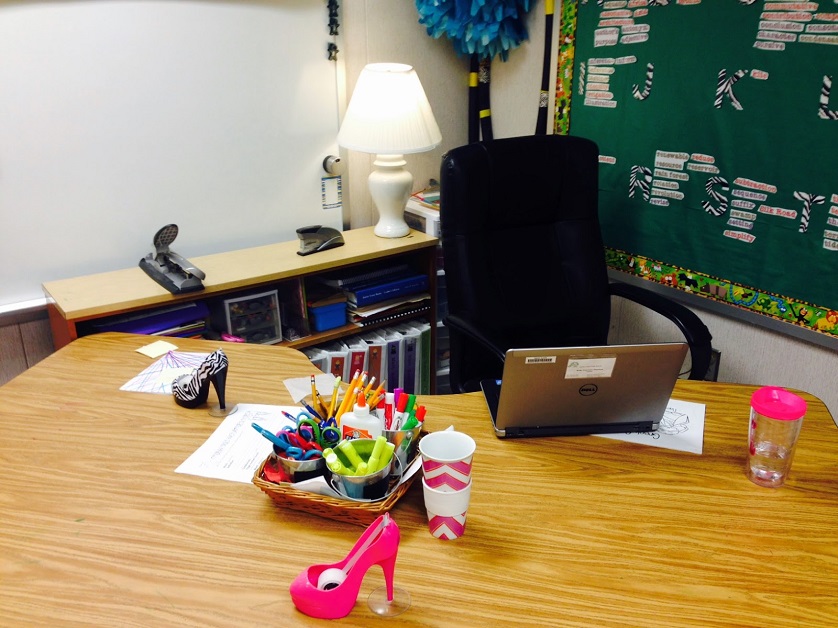
The final item on the list is the teacher’s desk – an important furniture piece that brings the whole classroom together. Basically, as students need their own space to work on different tasks, teachers also need one to prepare for study plans, examine papers, homework and overall prepare for a day of teaching and of course rest every once in a while.
And here, despite the ergonomic design and comfort is another important thing – the placement. Traditionally the teacher’s desk is placed in the centre of the room so that every kid in the classroom can have a good visual. But that can also have a negative effect on students since it gives off an overly formal and authoritative vibe. Instead, the teacher’s desk should be placed aside and there needs to be more interaction and activity from the teacher’s behalf so that the students see him/her as friendly and approachable.











